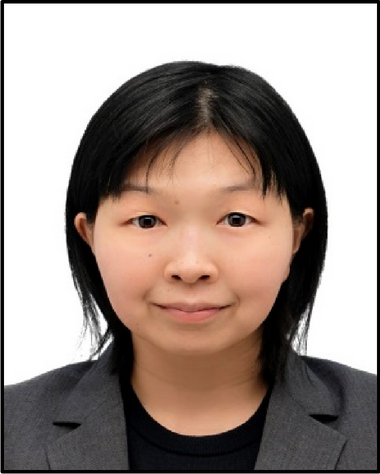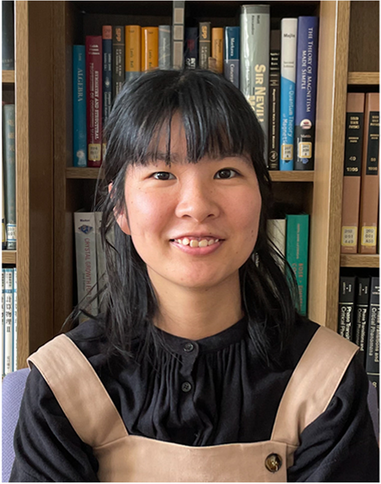Vol.34 (Apr) 2024 | Article no.15 2024
The late Fumiko Yonezawa, emeritus professor of Keio University, made major contributions to physics, such as the development of the coherent potential approximation, and the theory of the metal–insulator transition in liquid selenium. Prof. Yonezawa served as the first female president of the Physical Society of Japan (JPS) and as the president of the Society for Women Scientists for a Bright Future, she also promoted women scientists.
JPS has established the “Fumiko Yonezawa Memorial Prize” to celebrate the achievements of Prof. Yonezawa and to honor and encourage the activities of the women who are members of JPS.

Several prize winners are selected once a year, with a maximum of about five recipients. The prize ceremony is held during the annual meeting of JPS. The prize recipients give commemorative lectures at JPS meetings within a period of one year after receiving the prize. Winners receive items such as certificates and honorary shields, as well as additional prizes, namely: (1) paid attendance fees for JPS meetings for the next three years; and (2) an exemption, of up to 200,000 JPY (yen), from publication fees and open access fees for the Journal of the Physical Society of Japan and from the article processing charges for the journal, Progress of Theoretical and Experimental Physics, which is valid for submissions up to three years after the prize is received.
The citations of the winners of the 5th (2024) Fumiko Yonezawa Memorial Prize are listed below.
Tomoko Ariga
Associate Professor, Division for Experimental Natural Science, Faculty of Arts and Science, Kyushu University
Exploring three-flavor neutrino experiments at a particle collider

Dr. Tomoko Ariga’s work has studied neutrinos by using emulsion films.
In graduate school, she worked on the DONUT (Direct observation of the nu tau, E872) experiment at Fermilab in the USA by utilizing 800 GeV protons. Using a new analysis method that she developed, she increased the number of observed tau neutrino (which is one of the three kinds of neutrinos) events from 4 to 9, and she was the first to ever measure the cross-section of tau neutrinos.
After receiving her PhD, she joined the OPERA experiment at CERN in Europe and searched for events in which muon neutrinos changed to tau neutrinos due to oscillations between the two quantum states. Before her analysis, three events had been observed, but with her further analysis, she observed the fourth event and raised the significance of the observation of the oscillation from 3 sigmas to 4.2 sigmas.
After OPERA, she has been working on the CERN FASER experiment to observe TeV-order neutrinos produced by high-energy proton-proton collisions. Within this experiment, she proposed an experiment called FASERν as a co-spokesperson, received approval from the laboratory, and prepared the experiment. She first ran a test experiment by placing emulsion films in the experimental hall and demonstrated that neutrino events could be detected even in a high-background-rate environment. This also demonstrated for the first time that high-energy proton colliders can be used as neutrino sources. The FASERν group then collected data with the proposed detector. At an international conference in 2023, Dr. Ariga gave an invited talk showing the group’s first result from their experiment, where they observed 7 events. By analyzing the remaining data, the number of events is expected to increase by a factor of 100. This will open a new window to study neutrinos in the TeV energy region.
As described above, Dr. Ariga has taken a leadership role in large international collaboration experiments and pursued studies on neutrinos by utilizing emulsion film technology. Dr. Tomoko Ariga thus deserves to receive the Fumiko Yonezawa Memorial Prize of the Physical Society of Japan.
Mari Einaga
Assistant Professor, KYOKUGEN, Graduate School of Engineering Science, Osaka University
Experimental study of hydrides showing high-temperature superconductivity under high pressure

Room temperature superconductivity is one of the biggest goals for modern physics. It is an especially topical subject these days because some hydrides have exhibited much higher superconducting critical temperatures (Tc) at high pressures than the highest previous Tc on the order of 100 K for cuprate superconductors. Dr. Mari Einaga experimentally showed for the first time that sulfur hydride, which was found to have very high Tc above 200 K, is H3S with a body-centered cubic structure, through electron transport measurements combined with crystal structure analysis using synchrotron radiation. She further confirmed this conclusion by measuring high-purity H3S samples produced by laser heating at high pressures. These findings have been lauded as important results for the study of superconductivity and have led to further research in the search for room-temperature superconductivity. In addition to these remarkable achievements, Dr. Einaga has made many contributions to the study of pressure-induced superconductivity for various materials, including bismuth telluride and lanthanum hydride. Further significant contributions to condensed matter physics are expected from her excellent experimental techniques and ongoing domestic and international collaborations. Dr. Einaga thus deserves to be awarded the Fumiko Yonezawa Memorial Prize of the Physical Society of Japan.
Rina Tazai
Assistant Professor, YITP, Kyoto University
Study of quantum phase transitions in strongly correlated metals with geometrical frustration

Dr. Rina Tazai has made remarkable achievements in several phenomena in strongly correlated electron systems, where the effects of electron–electron interactions dominate, and where it is necessary to go beyond the conventional mean-field treatment and incorporate higher-order corrections in the electron-correlation effects. Specifically, using functional renormalization group theory, she has numerically demonstrated orbital ordering in transition-metal compounds due to higher-order electron correlations and unconventional superconductivity due to orbital fluctuations. In particular, she proposed a mechanism of s-wave superconductivity in the heavy-fermion superconductor CeCu2Si2, in which multiple degrees of freedom are prominent, due to the attractive interaction caused by electric hexapole fluctuations, and explained the reported experiment by another group. The fact that the experimentally observed s-wave superconductivity was explained by her theory is a highly original achievement, despite the fact that d-wave superconductivity has been considered to occur in CeCu2Si2 before the observation and her explanation. In terms of specific calculation methods, she has developed an original method that effectively calculates orbital ordering. The improvement of the program and the physical exploration of the program are remarkable in the field of condensed matter theoretical research, and we commend her for being worthy of the Fumiko Yonezawa Memorial Prize of the Physical Society of Japan.
A White Paper from the Office of National Higher Education Science Research and Innovation Policy Council, Thailand S&T Strategy. https://www.nxpo.or.th/th/frontier-research-3/
N. Ratsuntia, A. Songmunnak, N. Ritjoho, T. Sanghangthum and C. Kobdej, In Study of imaging system in proton computed tomography with data acquisition from a monolithic active pixel sensor, Siam Physics Congress 2022: Carbon Neutrality (SPC 2022). J. Phys. Conf. Ser., IOP Publishing. 2431(2023), 012093 (2022). https://doi.org/10.1088/1742-6596/2431/1/012093
A. Wisitsorasak, A. Shimizu, S. Sangaroon, K. Ogawa, B. Chatthong, S. Suksaengpanomrung, A. Tamman, N. Poolyarat, M. Isobe, Feasibility study of a Heavy Ion Beam Probe for the Thailand Tokamak-1. Fusion Eng. Des. 198, 114068 (2024)
P. Poramapijitwat, P. Thana, P. Sukum, Y. Liangdeng, C. Kuensaen, ...D. Boonyawan, Selective Cytotoxicity of Lung Cancer Cells—A549 and H1299—Induced by Ringer’s Lactate Solution Activated by a Non‑thermal Air Plasma Jet Device, Nightingale®. Plasma Chem. Plasma Process. 43, 805–830 (2023)
The Brainpower Congress, Program Management Unit for Human Resources & Institutional Development, Research and Innovation (PMU-B), Dec 18-20, 2023 (2023)
M. S. Bahramy, O. J. Clark, B.-J. Yang, J. Feng, L. Bawden, J. M. Riley, I. Marković, F. Mazzola, V. Sunko, D. Biswas, S. P. Cooil, M. Jorge, J. W. Wells, M. Leandersson, T. Balasubramanian, J. Fujii, I. Vobornik, J. E. Rault, T. K. Kim, M. Hoesch, K. Okawa, M. Asakawa, T. Sasagawa, T. Eknapakul, W. Meevasana & P. D. C. King, Ubiquitous formation of bulk Dirac cones and topological surface states from a single orbital manifold in transition-metal dichalcogenides. Nat. Mater. 17(1), 21–27 (2018)
G. Gitgeatpong, Y. Zhao, P. Piyawongwatthana, Y. Qiu, L. W. Harriger, N. P. Butch, T. J. Sato, and K. Matan, Nonreciprocal Magnons and Symmetry-Breaking in the Noncentrosymmetric Antiferromagnet. Phys. Rev. Lett. 119, 047201 (2017)
C. Thongbai, N. Khangrang, W. Jaikla, P. Kitisri, K. Kongmali, M.W. Rhodes, S. Rimjaem, J. Saisut, S. Supasin, S. Suphakul, Development of an Undulator Magnetic Field Measurement System for the Free-Electron Laser Facility at Chiang-Mai University. Physica Status Solidi (A) Applications and Materials Science. 220(10), 2200398 (2023)
W. Passatorntaschakorn, W. Khampa, W. Musikpan, C. Bhoomanee, A. Ngamjarurojana, S. Rimjaem, Atcharawon Gardchareona,c, C. Rodwihok, H. S. Kim, N. Khambunkoed, R. Supruangnet, H. Nakajima, L. Srathongsian, P. Kanjanaboos, A. Intaniwet, A. Kaewprajak, P. Kumnorkaew, F. Goubard, P. Ruankham, D. Wongratanaphisan, A novel carbon electrode for up-scaling flexible perovskite solar cells. Appl. Mater. Today. 34, 101895 (2023)
For additional details, please visit: https://www.thep-center.org
The authors read and approved the final manuscript.
The authors declare that they have no competing interests.
Springer Nature remains neutral with regard to jurisdictional claims in published maps and institutional affiliations.
If you'd like to subscribe to the AAPPS Bulletin newsletter,
enter your email below.